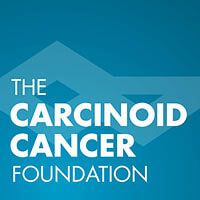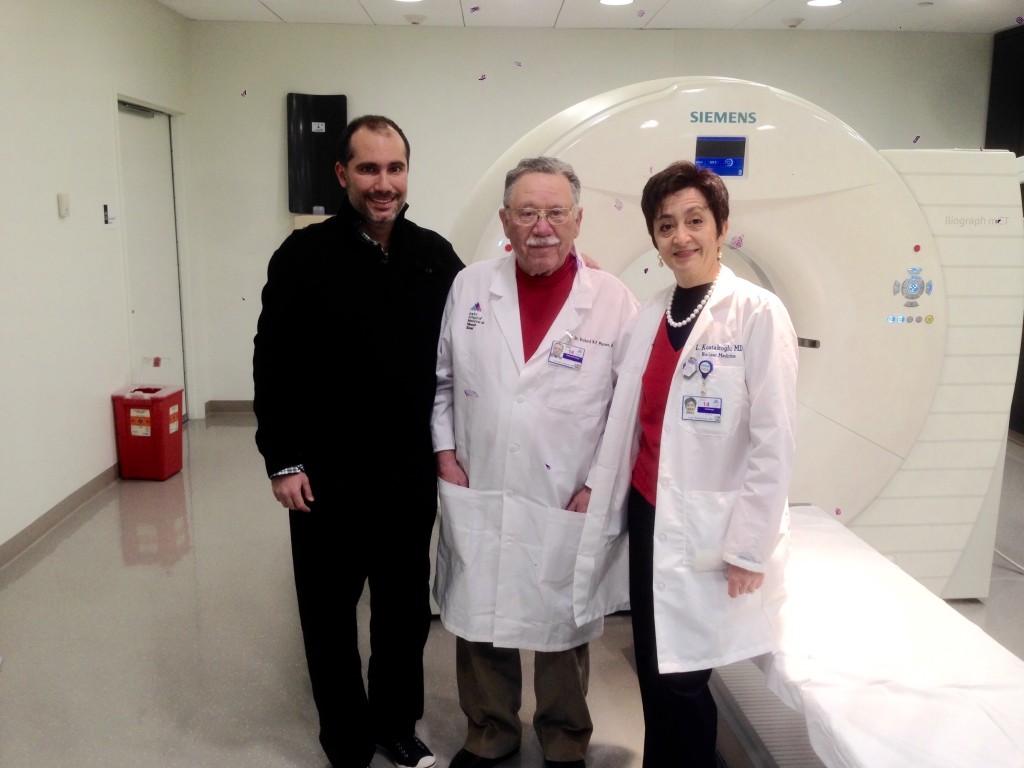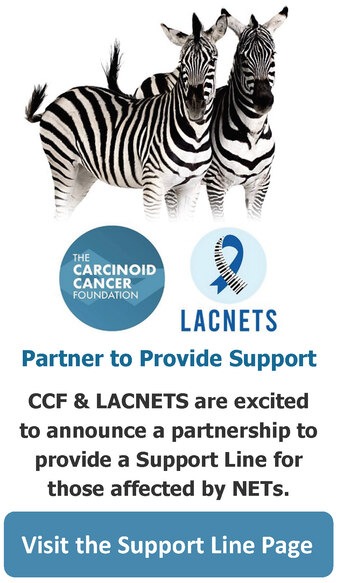When Brian Hakimian had the 68Gallium DOTATOC PET/CT scan at the Icahn School of Medicine, Mount Sinai in New York City on January 14, 2015, he became the first carcinoid patient to undergo this novel imaging test at a northeastern facility. Now in clinical studies in the United States, the Gallium-68 scan enables physicians to diagnose, stage, and monitor response to treatments in carcinoid and neuroendocrine cancer patients.
The radiopharmaceutical 68Gallium DOTATOC was designated as an orphan drug by the U.S. Food and Drug Administration (FDA) for the management of neuroendocrine tumors (NETs) in 2013. This designation is significant because it may lead to faster approval of the agent, which would greatly benefit carcinoid/NET patients in the United States. IBA Molecular is supplying the 68Gallium DOTATOC for clinical use in the New York, New Jersey, and Pennsylvania regions for the newest 68Gallium clinical studies. Additional studies are ongoing in California, Indiana, Iowa, Maryland, and Texas.
The study at Mount Sinai Hospital is headed by Lale Kostakoglu, MD, MPH, Chief of Nuclear Medicine and Molecular Imaging at the Icahn School of Medicine, and Richard R.P. Warner, MD, Director of Mount Sinai’s Center for Carcinoid and Neuroendocrine Tumors and Medical Director of the Carcinoid Cancer Foundation. “We are pleased to be working with IBA Molecular for the supply of this important new tracer,” said Dr. Kostakoglu, “The ability of IBA Molecular to provide CGMP-manufactured doses of this compound is key to the success of this new phase of our molecular imaging program.”
The primary goal of the Mount Sinai study is to demonstrate the safety and efficacy of 68Gallium DOTATOC as an accurate imaging technique for diagnosis, staging, and monitoring of response to treatment in patients with somatostatin-receptor expressing tumors.
According to research presented at the Society of Nuclear Medicine’s 2012 Annual Meeting, “A molecular imaging method that combines PET and CT scans with Gallium-68 pinpoints hormonally active tissues in the body that could change the course of treatment for many patients with neuroendocrine cancer.”
With more than 115,000 people living with carcinoid and NET cancer in the United States, options for imaging and treatment are critical to both quality of life and length of life. Brian Hakimian was diagnosed with carcinoid in April 2013 after experiencing significant facial flushing, one of the symptoms of carcinoid syndrome. Mr. Hakimian hopes the 68Gallium DOTATOC PET/CT imaging will become the standard of care for US patients as it is already the standard in Europe. The 68Gallium scan is both shorter and easier for patients, says Mr. Hakimian, and provides images that are much clearer than the Octreoscan. When Mr. Hakimian received the results of his scan he found out more information about the tumors on his liver, which confirmed the results of an Octreoscan a week earlier. He now knows that he is eligible for PRRT (peptide receptor radionuclide therapy) treatment in the future, a treatment that could have a significant impact on his health.
The 68Gallium DOTATOC clinical study at Mount Sinai will enroll 130 patients over a two-year period. For all interested in participating in the study, please contact Dr. Lale Kostakogolu, lale.kostakoglu@mssm.edu, or Dr. Richard R.P. Warner, 212-241-4299 or richard.warner@mountsinai.org, to determine eligibility for the study.



